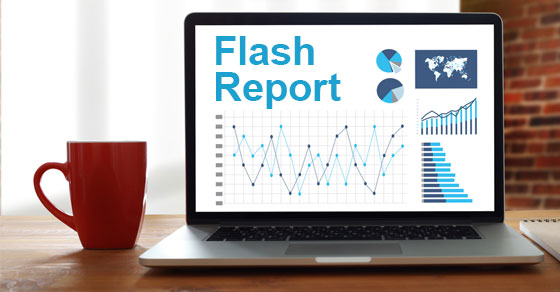Supplement your financial statements with timely flash reports

Timely financial information is critical to a successful business or nonprofit organization. In today’s dynamic marketplace, you may need to act fast to ward off potential threats and risks — and jump on new opportunities. But if you wait until your financial statements are released to react, you’ll likely miss out. Flash reports can provide real-time data that can help management respond to changing conditions.
Potential benefits
U.S. Generally Accepted Accounting Principles (GAAP) are considered by many people to be the gold standard in financial reporting. However, the process is complicated, so accounting departments usually take two to six weeks to send out GAAP financials. It takes even longer if an outside accountant reviews or audits the financial statements. Plus, most organizations only publish financial statements monthly or quarterly.
By comparison, weekly flash reports typically provide a snapshot of key financial figures, such as cash balances, receivables aging, collections, and payroll. Some metrics might even be tracked daily — including sales, shipments, and deposits. This is especially critical during seasonal peaks or among distressed borrowers.
Effective flash reports are simple and comparative. Those that take longer than an hour to prepare or use more than one sheet of paper are too complex. Comparative flash reports identify patterns from week to week — or deviations from the budget that may need corrective action. Graphs and tables can help nonfinancial people who receive flash reports interpret them quickly.
Critical limitations
Flash reports can help management proactively identify and respond to problems and weaknesses. But they have limitations that management should recognize to avoid misuse.
Most important, flash reports provide a rough measure of performance and are seldom completely accurate. It’s also common for items such as cash balances and collections to ebb and flow throughout the month, depending on billing cycles.
Companies generally use flash reports internally. They’re rarely shared with creditors and franchisors, unless required in bankruptcy or by the franchise agreement. A lender also may ask for flash reports if a borrower fails to meet liquidity, profitability, and leverage covenants.
If shared flash reports deviate from what’s subsequently reported on GAAP financial statements, stakeholders may wonder if management exaggerated results on flash reports or is simply untrained in financial reporting matters. If you need to share flash reports, consider adding a disclaimer that the results are preliminary, may contain errors or omissions, and haven’t been prepared in accordance with GAAP.
Tailoring the report
What information should be included on your organization’s flash report? This is a common question, but there isn’t a universal template that works for everyone. For instance, a consulting firm might focus on billable hours, a hospital might analyze the number of beds occupied, and a manufacturer might want to know about machine utilization rates. We can help you figure out what items matter most in your industry and how to create effective flash reports for your needs.
© 2023
